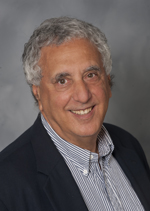Let There Be Water by Seth M. Siegel; St. Martin’s Press; © 2015; ISBN: 978-1-250-07395; 337 pages including appendices, notes, bibliography and index, $27.99
By Donald H. Harrison

 SAN DIEGO – Most of Israel has an arid climate, and there is a paucity of water in the rivers that flow from the mountains in the eastern portion of the country to the Mediterranean to the west, and from the highlands of Syria and Lebanon south through the Great Rift Valley into the Sea of Galilee and later into the Dead Sea.
SAN DIEGO – Most of Israel has an arid climate, and there is a paucity of water in the rivers that flow from the mountains in the eastern portion of the country to the Mediterranean to the west, and from the highlands of Syria and Lebanon south through the Great Rift Valley into the Sea of Galilee and later into the Dead Sea.
When the British Mandatory Power decided for political reasons to limit Jewish immigration in 1939, it tried to justify its “White Paper” with arguments that there simply was not enough water to sustain population increases – an assumption that was disproven by many fold by members of the Yishuv and their descendants who decided to do whatever was necessary to prove the British wrong.
There was no single “silver bullet” to solve Israel’s water problems. Instead, an entire fusillade was necessary to bring Israel from water shortages to water surpluses. This excellent, well-researched book enumerates the numerous “bullets” Israel fired in its successful quest for water independence. Additionally, it offers the lessons learned in Israel as models for the world as climate change and population growth continue to stress the global supply of fresh water.
In San Diego County, where I live, we already have harkened to one of the lessons. The company formerly known as Israel Desalination Engineering, which today goes by its initials, IDE, is currently putting the finishing touches on a desalination plant in suburban Carlsbad that each day will pump 54 million gallons of desalinated sea water into the mixing reservoirs of the San Diego County Water Authority. When completed, this will be the largest desalination facility constructed so far in the Western Hemisphere, yet it will be only one step toward water security in an area that has been hard-hit by the California drought.
Siegel details how Israel conserved and cleaned up its natural fresh water supply and how it supplemented that supply with so-called “manufactured water,” including both desalinated water and recycled wastewater. He reports that developing a sane, manageable water policy in Israel required the centralization of authority – all water in Israel is considered public property –and the removal of subsidies for the use of water.
Because people had to pay what the water was worth, and not an artificial low price, they changed their behaviors. Farmers started planting water-wise crops and utilizing such technological improvements as drip irrigation. Home-owners turned off the faucets while soaping up in the shower, or while brushing their teeth at their sinks. They installed dual-flush toilets in order to lessen the amount of water they used for this purpose. When their children finished their baths, some parents even scooped up the dirty water into small tubs and carried it out to the garden to nourish the plants. “Every drop counts” became the watchword of a water-conscious; schools taught children from the earliest ages the importance of conservation.
A lot of water is lost as a result of leakage in the pipes; aging infrastructure can cause great wastage. Israel developed a program to monitor water conduits and to fix them as soon as leakages were discovered.
The centralized water authority developed a policy to bring water where it was needed, building a national water carrier from the northern part of the country to the south, enabling the Negev Desert to bloom. It built holding ponds to catch water that would otherwise run off the mountains unimpeded to the sea. It encouraged the development of a seed industry that could grow plants able to flourish in low water ecosystems.
Instead of treating sewage and dumping it out to sea, as is still done here in San Diego County, the Israelis captured the treated effluent, subjected it to even more treatment, and piped it to permeable ground 300 feet above a giant aquifer. The process of percolating slowly down to the aquifer cleaned the water even more, making it purer in many cases than fresh water from streams. This recycled wastewater then was piped to farmers, relieving the pressure on fresh water sources. With more fresh water available, Israel was able to flush its polluted streams and rivers.
It took a while before Israel was able to produce desalinated water at a price that could be afforded by consumers. Various methodologies were tried and rejected. Freezing was one example, so that salt crystals could be scraped off the top of the resulting ice pack. Boiling was another, but the energy required to bring sea water to a boil made the process too expensive. Finally mesh with super tiny holes was developed enabling the water to be pushed through and the salts left behind in a process known as reverse osmosis, or RO for short. RO is the process being utilized in the new Carlsbad plant.
Israel is known as the start-up” country, and companies that are interested in bringing on to market water-saving devices are given encouragement in the form of seed money by the national water company. Even though the country has a water surplus today, it does not rest on its laurels. It wants to have a wide diversity of water sources – and water saving mechanisms – so that in the event one suddenly does not work, there are others to fall back upon.
Israel’s advanced water capabilities have helped the country break out of its diplomatic isolation as countries all over the globe realize that Israeli expertise can help their people too.
*
Harrison is editor of San Diego Jewish World. He may be contacted via donald.harrison@sdjewishworld.com
Pingback: - San Diego Jewish World
Pingback: Israeli - local pacts proposed for water, cyber security - San Diego Jewish World
Pingback: San Diego JNF president tells goals, programs - San Diego Jewish World